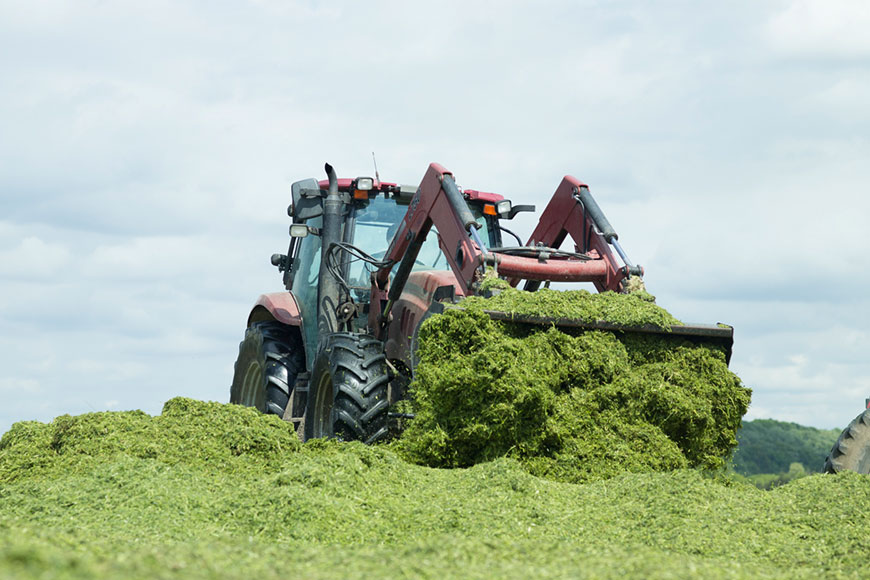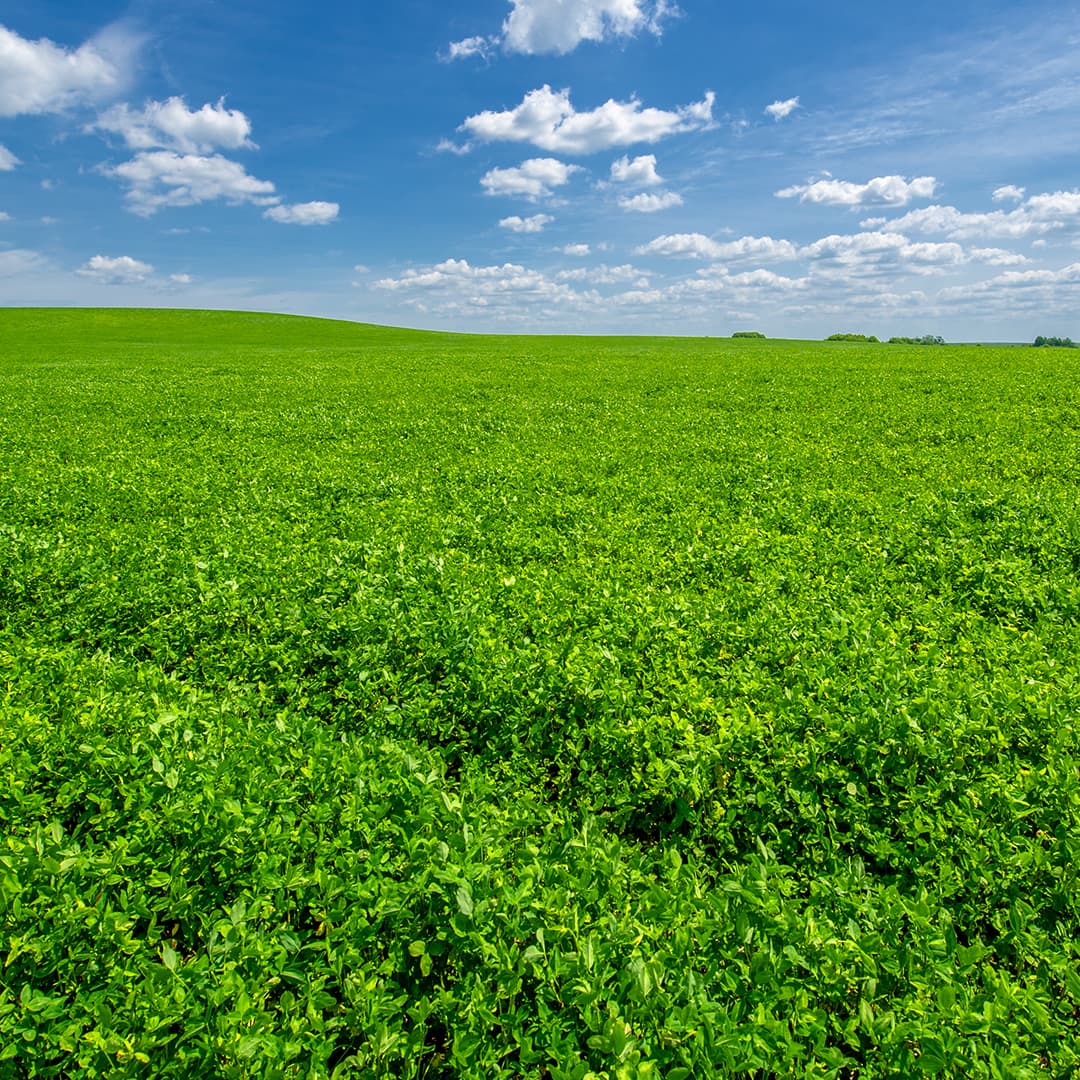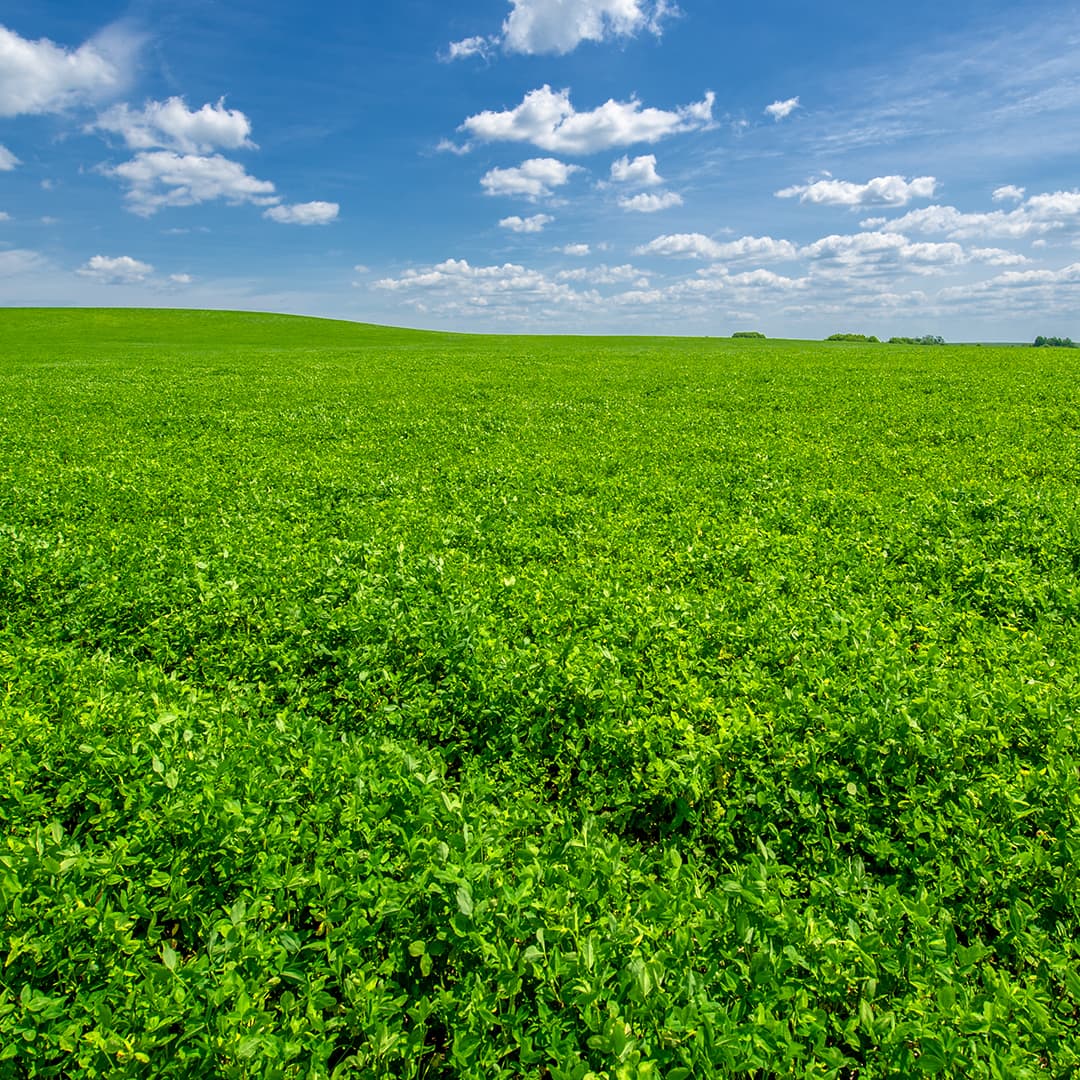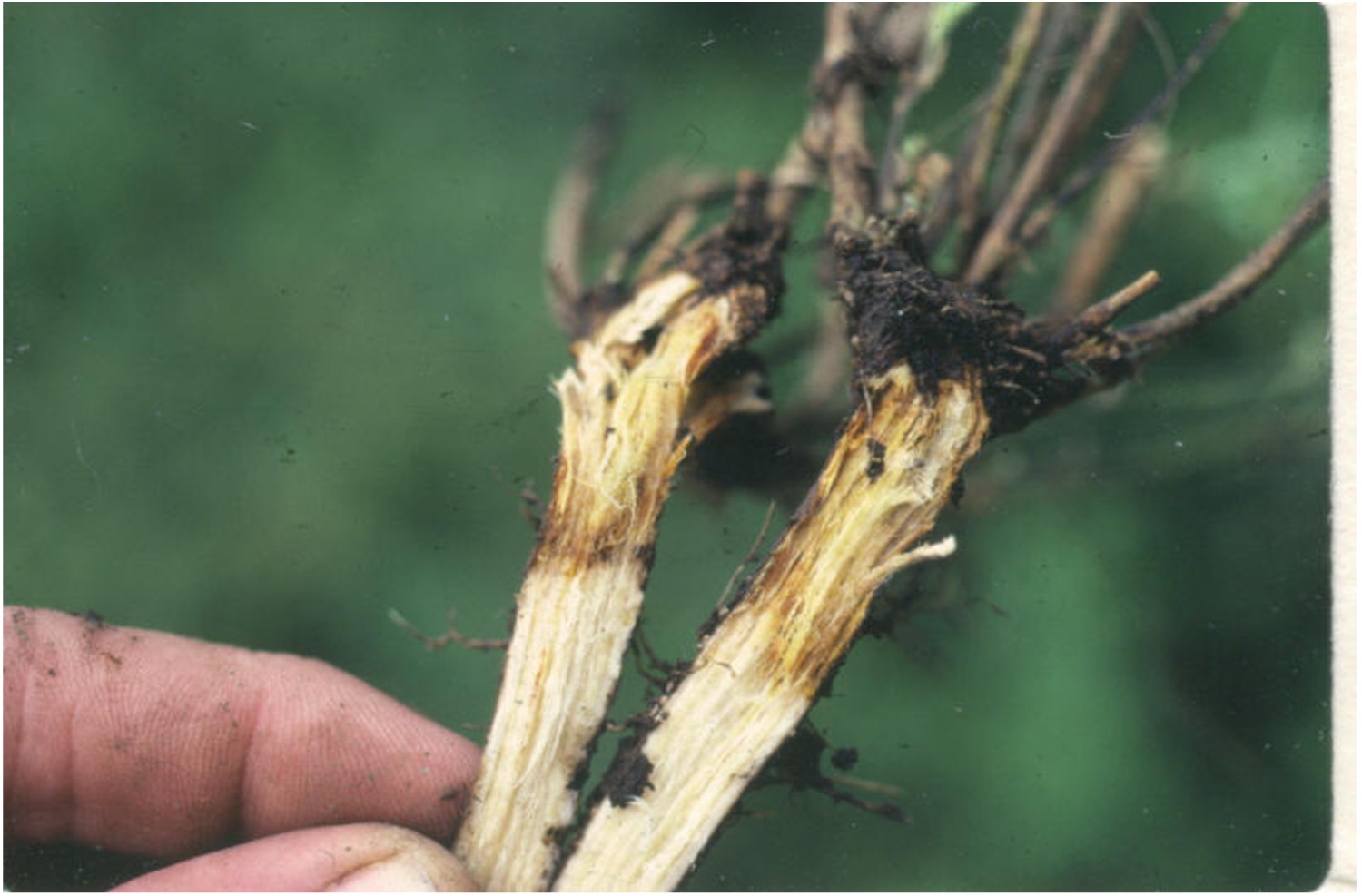Summer is a great time to decide what the best method of storing hay over the winter will be. It can vary from location to location as well as resources available, but there are several recommendations that will hold true no matter where you are. The main goal with winter storage is to maintain quality and decrease any dry matter losses that we might incur. Minimizing exposure to the winter elements, especially precipitation which can decrease both hay quantity and quality, is our top priority. Not only is it important to have enough tonnage to support our herd, but also that we are maintaining the quality of our hay throughout the season.
The ideal storage for hay is inside, out of the elements, in a well-ventilated structure, whether this be a barn, shed, or a pole structure. Unfortunately, this is often not possible. So next we need to decide what are some other feasible methods of decreasing exposure to the elements. Leaving hay outside completely uncovered increases dry matter losses, ranging anywhere from 5-40% dry matter loss. Quality is also decreased, with some of the water-soluble nutrients, like water-soluble carbohydrates, potentially leaching from the hay. This can decrease the overall energy available from the forage. Other components, such as nitrates, can move within the haystack, and become concentrated in the lower bales, creating a potentially toxic feed for our animals.
Regardless of bale size and shape, it is advised to keep the forage off the ground. Whether you stack it on pallets, fence posts, or even a well-drained gravel base, this will help to minimize losses. Storing bales on bare ground can cause an estimated 5-20% loss in dry matter, which can add up quickly and account for over half of total dry matter losses. Even if the ground immediately below the hay is not receiving moisture, the surrounding soil is, which will leach into the soils directly underneath the haystack.
It is common to see molding occur on the lower bales due to direct contact with wet soil. The same sort of issues can occur even on concrete floors, as concrete is great at absorbing moisture, so make sure to keep this in mind even if your hay is being stored under a shelter. Mold can become a significant problem, contributing to issues with air quality, as well as causing detrimental impacts to consuming animals. Horses are considered to be the most susceptible to mold borne issues, and so take care when feeding any mold hay. Depending on the type of mold, humans can be impacted as well, so it is always best to avoid conditions that promote mold growth in the first place. This begins at harvesting but continues through the storage phase.
Covering the tops of bales with something such as a large tarp or water-resistant canvas will help to divert moisture away from the stack. Make sure that there is some overhang of the tarp over the side of the stack, so that lower bales are not accumulating moisture. If bales are not going to be covered, it is advised to keep stacks small, as water from upper bales will penetrate directly into lower bales, increasing the number of damaged bales.
Ventilation is important in continuing the drying process after bales become wet. For example, it is best to keep round bales in single layers placed end-to-end, with several feet in between rows to increase air flow and circulation around all bales. Bale density is also important. The tighter the bale, the better it will be able to withstand winter precipitation and damage. Loosely packed bales will “pick up” more moisture, and it will penetrate throughout more of a bale than a densely packed bale. This means that a larger percent of the bale will be exposed to weathering processes, decreasing quality, and potentially increasing dry matter losses.
Wrapping round bales will help to significantly decrease any quality and yield losses from winter storage if the equipment and resources are available. A study found that 6-8 mils of plastic wrap is ideal, as it is the optimal trade-off between money spent on wrapping and amount of hay lost to the elements.
Proper storage of your hay is critical in ensuring that your animals will have enough roughage to get through the cold winter months. Decreasing exposure to the elements is the most important factor and minimizing the number of bales that are exposed to the winter elements will help to minimize total quality and yield losses.
The ideal storage for hay is inside, out of the elements, in a well-ventilated structure, whether this be a barn, shed, or a pole structure. Unfortunately, this is often not possible. So next we need to decide what are some other feasible methods of decreasing exposure to the elements. Leaving hay outside completely uncovered increases dry matter losses, ranging anywhere from 5-40% dry matter loss. Quality is also decreased, with some of the water-soluble nutrients, like water-soluble carbohydrates, potentially leaching from the hay. This can decrease the overall energy available from the forage. Other components, such as nitrates, can move within the haystack, and become concentrated in the lower bales, creating a potentially toxic feed for our animals.
Regardless of bale size and shape, it is advised to keep the forage off the ground. Whether you stack it on pallets, fence posts, or even a well-drained gravel base, this will help to minimize losses. Storing bales on bare ground can cause an estimated 5-20% loss in dry matter, which can add up quickly and account for over half of total dry matter losses. Even if the ground immediately below the hay is not receiving moisture, the surrounding soil is, which will leach into the soils directly underneath the haystack.
It is common to see molding occur on the lower bales due to direct contact with wet soil. The same sort of issues can occur even on concrete floors, as concrete is great at absorbing moisture, so make sure to keep this in mind even if your hay is being stored under a shelter. Mold can become a significant problem, contributing to issues with air quality, as well as causing detrimental impacts to consuming animals. Horses are considered to be the most susceptible to mold borne issues, and so take care when feeding any mold hay. Depending on the type of mold, humans can be impacted as well, so it is always best to avoid conditions that promote mold growth in the first place. This begins at harvesting but continues through the storage phase.
Covering the tops of bales with something such as a large tarp or water-resistant canvas will help to divert moisture away from the stack. Make sure that there is some overhang of the tarp over the side of the stack, so that lower bales are not accumulating moisture. If bales are not going to be covered, it is advised to keep stacks small, as water from upper bales will penetrate directly into lower bales, increasing the number of damaged bales.
Ventilation is important in continuing the drying process after bales become wet. For example, it is best to keep round bales in single layers placed end-to-end, with several feet in between rows to increase air flow and circulation around all bales. Bale density is also important. The tighter the bale, the better it will be able to withstand winter precipitation and damage. Loosely packed bales will “pick up” more moisture, and it will penetrate throughout more of a bale than a densely packed bale. This means that a larger percent of the bale will be exposed to weathering processes, decreasing quality, and potentially increasing dry matter losses.
Wrapping round bales will help to significantly decrease any quality and yield losses from winter storage if the equipment and resources are available. A study found that 6-8 mils of plastic wrap is ideal, as it is the optimal trade-off between money spent on wrapping and amount of hay lost to the elements.
Proper storage of your hay is critical in ensuring that your animals will have enough roughage to get through the cold winter months. Decreasing exposure to the elements is the most important factor and minimizing the number of bales that are exposed to the winter elements will help to minimize total quality and yield losses.



